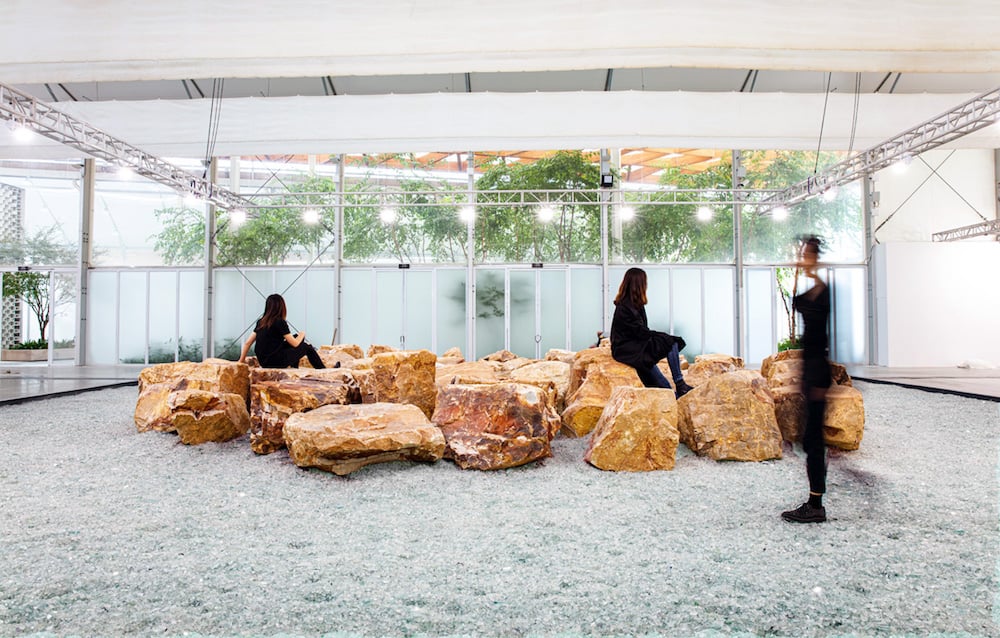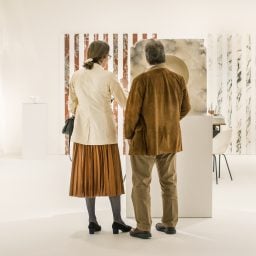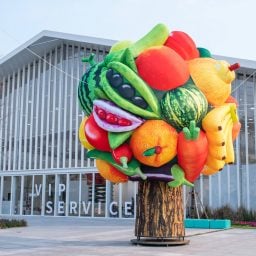After nearly eight months of lockdown and travel restrictions that led to the cancellation of almost every major art fair around the globe, the members of Shanghai’s art week made the bold decision to forge ahead with their signature events. The annual ART021 fair, held at the downtown Shanghai Exhibition Center, opened—to real live people, attending in person—on Thursday, while the West Bund Art & Design fair, held in the more remote but decidedly sleeker Xuhui District, opened Wednesday.
While the city was jittery from the news of a new positive case recorded just as the fairs were set to open, organizers placed a bet that the still-minuscule infection rate would be enough to lure local collectors out to see art IRL—and that they would be ready to spend.
It was a leap of faith for dealers, too, who have spent much of the year relying on PDFs and online viewing rooms and had to invest significant time and money to show up in person.
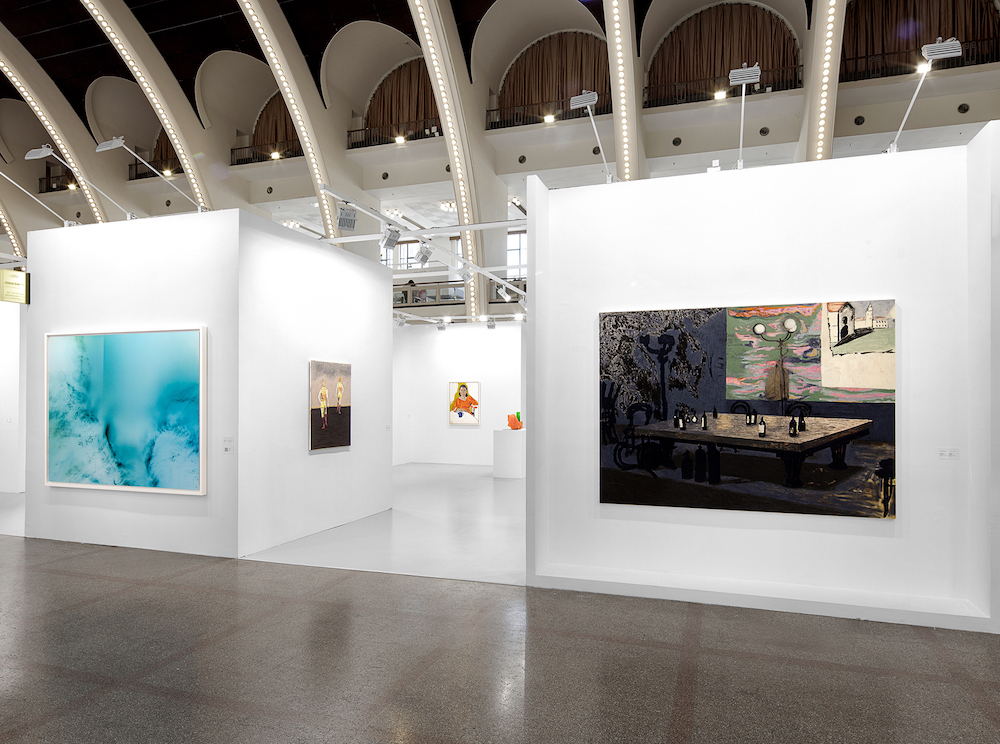
Installation view of David Zwirner Gallery’s booth at ART021. Image courtesy David Zwirner Gallery.
Big Investment
Nick Buckley Wood, the Asia director at Galerie Thaddaeus Ropac, was only traveling from Hong Kong—essentially the length of a flight from New York to Chicago—but upon landing had to check into a government-owned hotel for two weeks. He was provided three standard-issue meals a day, the hours broken up by temperature checks.
“I will actively avoid this kind of quarantine situation again,” Wood said.
Still, he admitted, the isolation was worth it to be able to finally do an in-person art fair after months of virtual initiatives that failed to bring in the same volume of sales.
“We had heard that the virus was under control in Shanghai and Korea and that business and social life has returned to normal except for strict immigration rules,” Wood said. “Our sales have been down since the virus began, so as long as safety was not compromised we decided to participate in person—no online sales room can compete with standing in front of an artwork with a collector and discussing a piece.”
In the “before times,” of course, art-fair execution would have been a relatively straightforward affair. But now, it requires a complex calculus factoring in the status of the city of origin, the health of everyone involved, and the logistics of transporting artworks at a time of limited mobility.
“Not being able to travel to fairs was unimaginable in the past,” Leo Xu, the senior director of David Zwirner Hong Kong, told Artnet News. The gallery has four staff people present at ART021, all of whom had to quarantine for 14 days on arrival and will have to do the same upon returning to Hong Kong. That’s nearly a month of self-isolation… for a four-day fair.
“We have invested significant time,” Xu said.
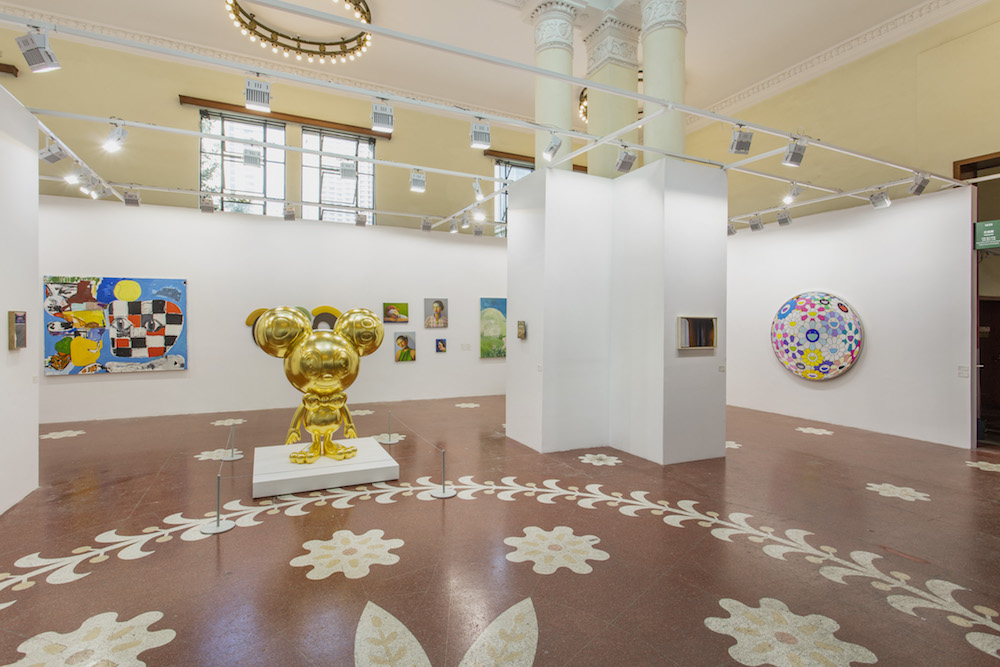
Exhibition views of Perrotin booth at ART021, 2020. Photo: JJYPHOTO. Courtesy of
the artists and Perrotin. ©2020 Kaikai Kiki Co., Ltd. All Rights Reserved.
Returning to IRL
After galleries sorted out their own travel plans, they had to tackle the next big challenge: transporting the art.
“Yes, there may be fewer flights. Yes, they may be more expensive. Our plan helped us to navigate logistical challenges,” said Olga Rosen, Gagosian’s art fair manager. The mega-gallery used a pared-down team to present a new body of mountain paintings by Chinese artist Jia Aili, which have already nearly sold out.
Xu, of David Zwirner, said the restrictions pushed the gallery to “more rationally analyze what artworks we should present at the fair, and what works are needed for the development of the local market since we didn’t want to ship as much work as we normally would have.”
Galleries also benefitted from the fact that this was the first major physical fair anywhere in the world since March, so they had their choice of works to pick from, having not had to split their inventory across Frieze, FIAC, and other marquee fairs around the globe.
The pent-up demand was good for business. Despite the lack of traveling collectors, Xu said that mainland institutions present, such as the Long Museum, were buying up multiple works.
By the end of the VIP preview of ART021, Zwirner had sold around 20 works by artists including Harold Ancart, Luc Tuymans, Oscar Murillo, Michaël Borremans, Carol Bove, Thomas Ruff, Josh Smith, and Wolfgang Tillmans for a combined total of $5.4 million.
“It is mandatory to wear a face mask inside the fair, and visitors are required to disclose their digital health code and fill in a health declaration form—it feels very safe,” Xu said in an email from Shanghai. “The mood overall is celebratory.”
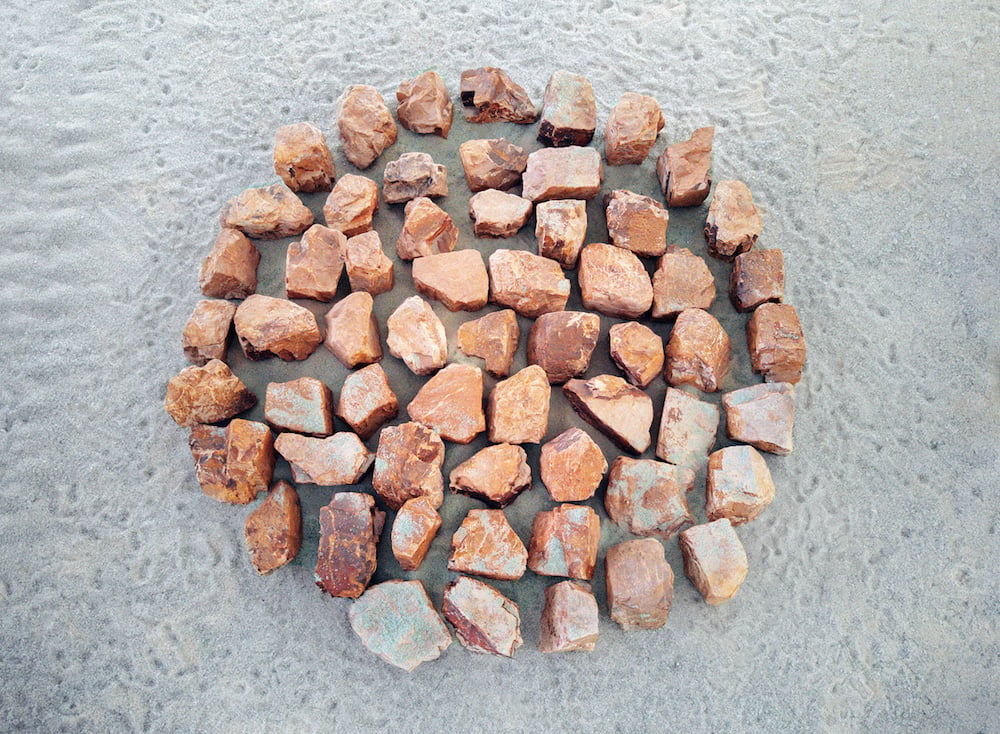
Installation view of Céleste Boursier-Mougenot miner(e)ality at West Bund Art & Design fair in Shanghai. Photo: Lawrence Lu. © Céleste Boursier-Mougenot / ADAGP, Paris. Courtesy Paula Cooper Gallery, New York.
Going Local
Galleries with staff members already based in Shanghai had a bit of a logistical leg up. Paula Cooper Gallery relied on Cara Zhuang, who joined the team in the summer of 2019, to orchestrate its West Bund presentation, an installation by Céleste Boursier-Mougenot.
“Things were slowed down quite a bit but we had planned for this and gave ourselves a lot of leeway to deal with potential delays,” a Paula Cooper representative said. In the end, the piece “was produced entirely on site” thanks to hours of phone, WeChat, and Zoom conversations among the gallery, fair organizers, vendors, and the France-based artist.
Almine Rech also relied on local staff to participate in both fairs, having opened a permanent space in the Bund district last year. Rech said the two events “create a cultural moment in the city that felt particularly meaningful this year.” Along with a solo presentation of work by Los Angeles-based artist Wes Lang at West Bund, the gallery organized a group show at ART021.
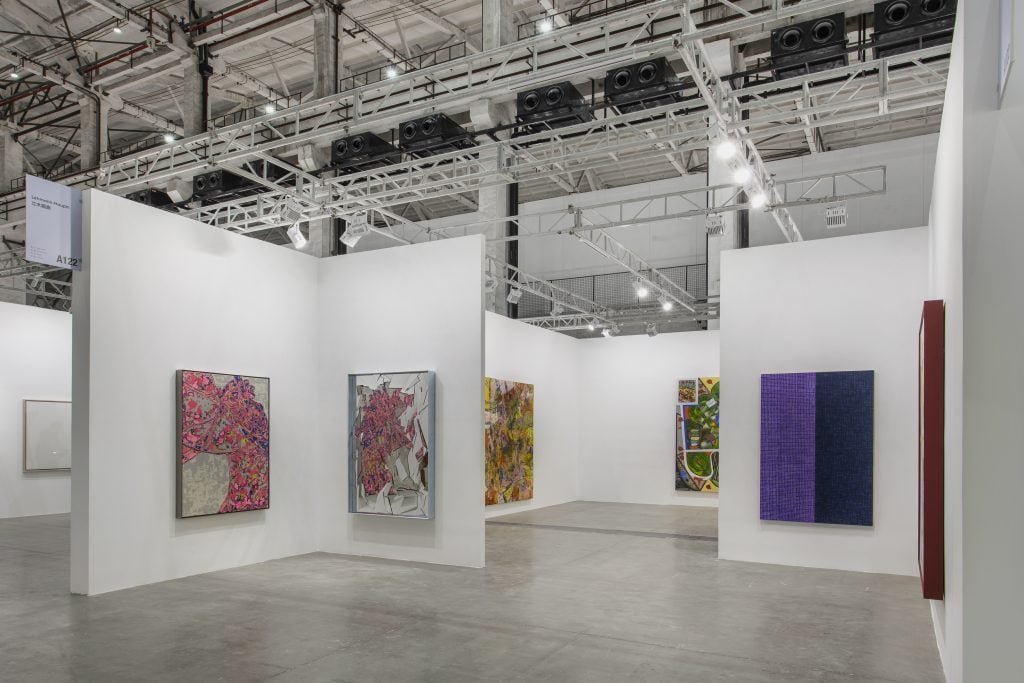
Installation shot of the Lehmann Maupin booth at the West Bund Art & Design 2020 (Photo courtesy of Lehmann Maupin)
Its sales included works by Leelee Kimmel, Vaughn Spann, and Li Qing for between $50,000 and $80,000 each, as well as a work by Kenny Scharf priced between $100,000 and $150,000. At West Bund, the gallery sold a Wes Lang painting for $250,000 and two works on paper for $25,000.
Lehmann Maupin also benefitted from having a rep stationed in mainland China, director Tiffany Xu, who was able to travel easily to Shanghai due to the country’s robust response to the virus. In the past six months, there have never been more than a few active cases in the world’s most populous nation at one time, and vigorous contact-tracing apps isolate positive tests before they spread. The virus originated in China, but there have only been around 90,000 cases total in the country. (There have been 10.6 million cases in the United States, which has less than a quarter of its population.)
That’s why, once in Shanghai, those who traveled from out of town found themselves in something of a bubble, free to circulate through a packed art fair or hit up events such as an opening of an Alex Da Corte show at Prada Rong Zhai, which over the course of an evening attracted 1,000 people—an unthinkable occurrence elsewhere.
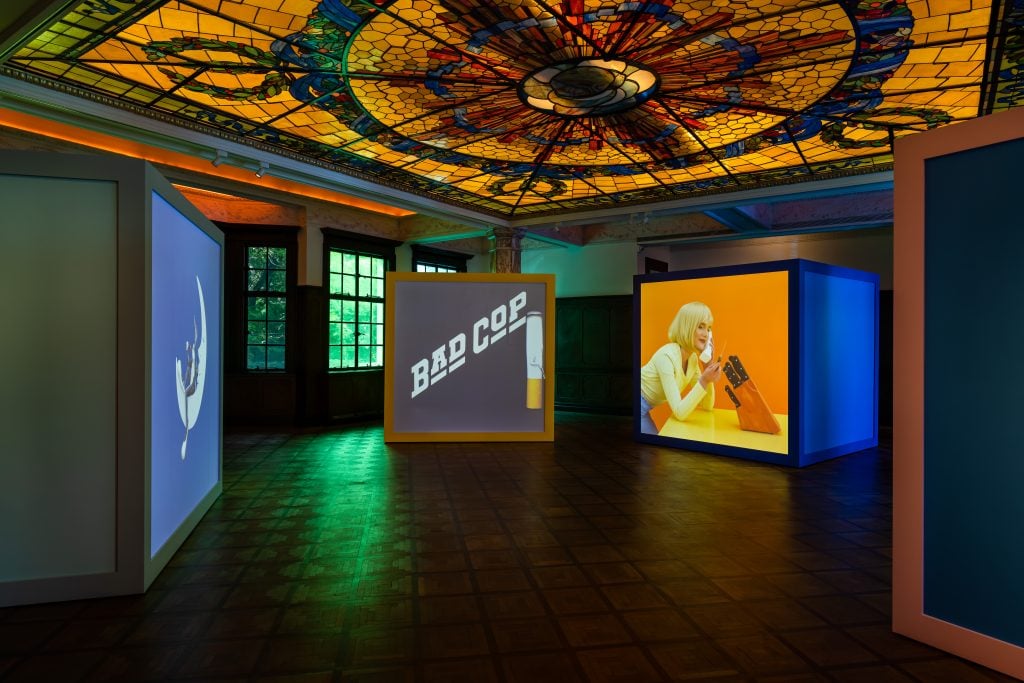
Installation shot of “Alex Da Corte: Rubber Pencil Devil” at Prada Rong Zhai (Photo by Alessandro Wang/Courtesy Prada Rong Zhai.)
Overall, the consensus was clear: there’s nothing like the real thing.
“We are still committed to participating in key fairs around the world as this in-person interaction is a critical part of our business model,” said Laura Zhou, Asia director at White Cube, who was on the ground in Shanghai. That’s why the London-based gallery, which has an outpost in Hong Kong, doubled down, participating in both West Bund and ART021. At the former, collectors snapped up works by Georg Baselitz, Tracey Emin, and Theaster Gates; at the latter, four works from the Qin Yifeng solo booth sold on the opening day.
Nevertheless, the reality is, for the time being, in-person art fairs will be only for Asian art hubs, and only for Asia-based collectors. Not only are large gatherings likely to be banned in the states and Europe through most of next year, but it’s nearly impossible for non-Chinese nationals to get into the region, even if they are willing to quarantine. China has stopped issuing work visas to foreigners (though Hong Kongers are still welcome) due to the rapidly skyrocketing outbreaks around the world.
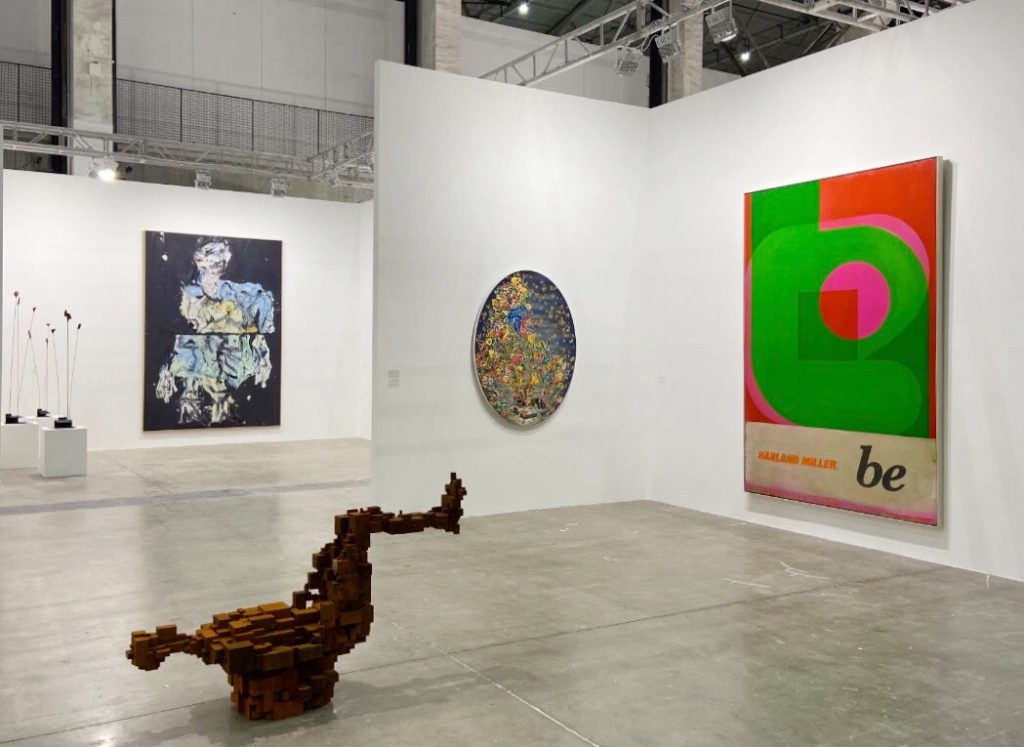
Installation shot of the White Cube booth at the West Bund Art & Design 2020 (Photo courtesy of White Cube)
So a successful duo of Shanghai fairs does not mean we’re back to any kind of brick-and-mortar international gallery circuit. Even in the relatively in-control cities in Asia, the pace is less frenetic. Wood, of Thaddaeus Ropac, said that he tentatively plans to go physically to Art Basel Hong Kong if it happens in March, and will also attend Taipei Dangdai when the delayed 2021 edition opens in May. But nothing beyond that—until there’s a vaccine.
